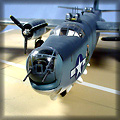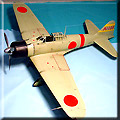|
History: : The Hs 129 was designed to fill the role of close air support
for ground troops, which required it to be heavily armoured for survivability. It was an
all-metal, cantilever low wing monoplane, and first flew in the spring of 1939. Many problems
slowed its development, including performance and handling issues, along with poor pilot vision.
It finally entered service in April 1942, using more powerful French radial engines that had been
captured. Unfortunately, the French engines were unreliable, and also very vulnerable to battle
damage, and even with the updated engines, the plane was still underpowered. The demands of the
Eastern Front, however mandated that the plane be put into service, and 843 "B" models were delivered.
|
|


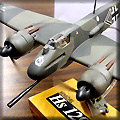



![[The Hs 129 was an all-metal, cantilever low wing monoplane, and first flew in the spring of 1939.]](BH-Hs129-02xa.jpg)
![[By 1944 a bigger weapon was required so some 25 planes were modified to carry a 75mm cannon in a jettisonable under-fuselage module.]](BH-Hs129-05xa.jpg)
![[The model was built almost entirely out of the box using the aged AMT/ERTL kit.]](BH-Hs129-03xa.jpg)
![[The topside of the plane was lightly sanded to knock down the raised panel.]](BH-Hs129-10xb.jpg)
![[The acrylic rod holding the kit was heated in the oven and formed around a coffee can.]](BH-Hs129-11xb.jpg)
![[The pilot figure came from the spares box.]](BH-Hs129-06xb.jpg)

![[Rust pastel chalk was dusted on the exhaust pipes, and black pastels were used for the exhaust stains.]](BH-Hs129-07xb.jpg)
![[Probably the best thing about the kit is that a selection of engine fairings are provided so that all variants could be built.]](BH-Hs129-08xb.jpg)
![[The kit was painted with Gunze paints, and Super Scale International decals were substituted for the poor kit provided decals.]](BH-Hs129-04xx.jpg)
![[The kit actually does capture the look of the aircraft well enough, however, the overall quality is poor.]](BH-Hs129-01xa.jpg)
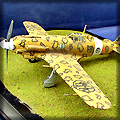
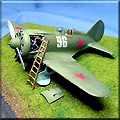
![[Back]](../../../German-Cross.jpg)
